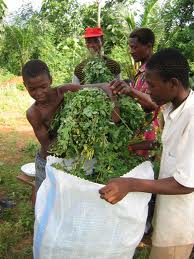Pretreatment techniques affect seedling growth characteristic Moringaoleifera
Keywords:
Moringaoleifera, Multi-purpose, Uses, Cultivation, NurseryAbstract
Moringa oleifera, commonly called the horseradish tree, drumstick tree, ben oil tree, miracle tree, and Mother’s Best Friend, known for its multi-purpose attributes, wide adaptability, and ease of establishment. Its leaves, pods and flowers packed with nutrients important to both humans and animals. Where diets lack in these essential nutrients the Moringa tree makes a major contribution to human health. The overall aim of this study was to gain further knowledge on how to cultivate, Moringa oleifera in nurseries in order to obtain more high quality seedling and higher yields, mainly during the dry season under dry tropical conditions in Sudan. Three pre-treatment techniques soaking in water for (0.0hrs.12hrs, 18hrs) used in determination of growth parameters such as height, width, crown and root /shoot ratios, The results indicate that variation in growth and productivity within the species under investigation is significant at the initial three months. Growth of control (0.0 water socking) was faster and better than other two treatments. Therefor seed of moringa do not need treatment.
References
Abbott, l., 1984. Emergence early survival and growth of Seedling of six tree species in Mediterranean forest of Western Australia Forest Ecology and management 9, 51-66.
Ahmed, E.A., 1982. The Autrecology of Acacia tortillas (Forks) Hayne. Ph .D. Thesis University of Khartoum – Sudan.
Bhanger, I.S., 2006. M. I. Effect of season and production location on antioxidantactivity of Moringaoleifera leaves grown in Pakistan. J. of Food Comp. and Anal.19,544-551
Chumark, P., Khunawat, P., Sanvarinda, Y., Phornchirasilp, S., Morales, P.N., Phivthong-ngam, L., Ratanachamnong, P., Srisawat, S., Pongrapeeporn, K.S., 2008. Thein vitro and ex vivo antioxidant properties, hypolipidaemic and antiatheroscleroticactivities of the water extract of Moringaoleifera Lam. leaves. J. ofEthnopharmacology., 116, 439-446
Dahiru, D., Obnubiyi, J.A., Umaru, H.A., 2006. Phytochemical screening and antiulcerogenic effect of Moringa. African Journal of Traditional, Complimentaryand Alternatives Medicines. 2006, 3, 3, 70-57
DanMalam, H.U., Abubakar, Z., Katsayal, U.A., 2001. Pharmacognostic studies on theleaves of Moringaoleifera. Nigerian Journal of Natural Product and Medicine 5,45-49.
Demister, W.R., 1972. The Influence of the Environment During seed Development and germination and the growth of pinups Sylvetrisl. PhD Thesis
Ibrahim, A.M., 1988. Juvenile development of some important Arid land tree species with particular reference to salt tolerance M.Sc .Thesis, Department of Forestry, Faculty of Agriculture, University of Khartou
Jahn, S.A., 1981. Traditional water purification in tropical developing countries: existing methods and potential application. Eschborn, Fed. Rep. Germany, Deutsche GesellschaftfürTechnischeZusammenarbeit (GTZ). Publ. No. 117.
Jahn, S.A., 1986. Proper use of African natural coagulants for rural water supplies: research in the Sudan and a guide for new projects.Eschborn, Fed. Rep. Germany, GTZ (in press.
Jahn, S.A., Dirar.H., 1979. Studies on natural coagulants in the Sudan, with special reference to Moringaoleifera seeds. Water (5). 90-97.
McBurney, R.P.H., Griffin, C., Paul, A.A., Greenberg, D.C., 2004. The nutritionalcomposition of African wild food plants: from compilation to utilization. Journalof Food Composition and Analysis.17, 277-289.
Muluvi, G.M., Sprent, J.I., Soranzo, N., Provan, J., Odee, D., Folklard, G., McNicol J.W., Powell, W., 1999. Amplified fragment length polymorphism (AFLP) analysis ofgenetic variation in M. oleifera Lam. J. of Mol. Ecol., 8, 463-470.
VonMaydell, H.J., 1986. Trees and shrubs of the Sahel, their characteristics and uses. Deutsche Gesellschaft fur TechnischeZusammenarheit (GTZ). FederalRepublic of Germany. pp. 334-337.

Published
How to Cite
Issue
Section
Copyright (c) 2013 Algunaid Hassan Fatima , I. A. Muna

This work is licensed under a Creative Commons Attribution-NonCommercial-NoDerivatives 4.0 International License.



